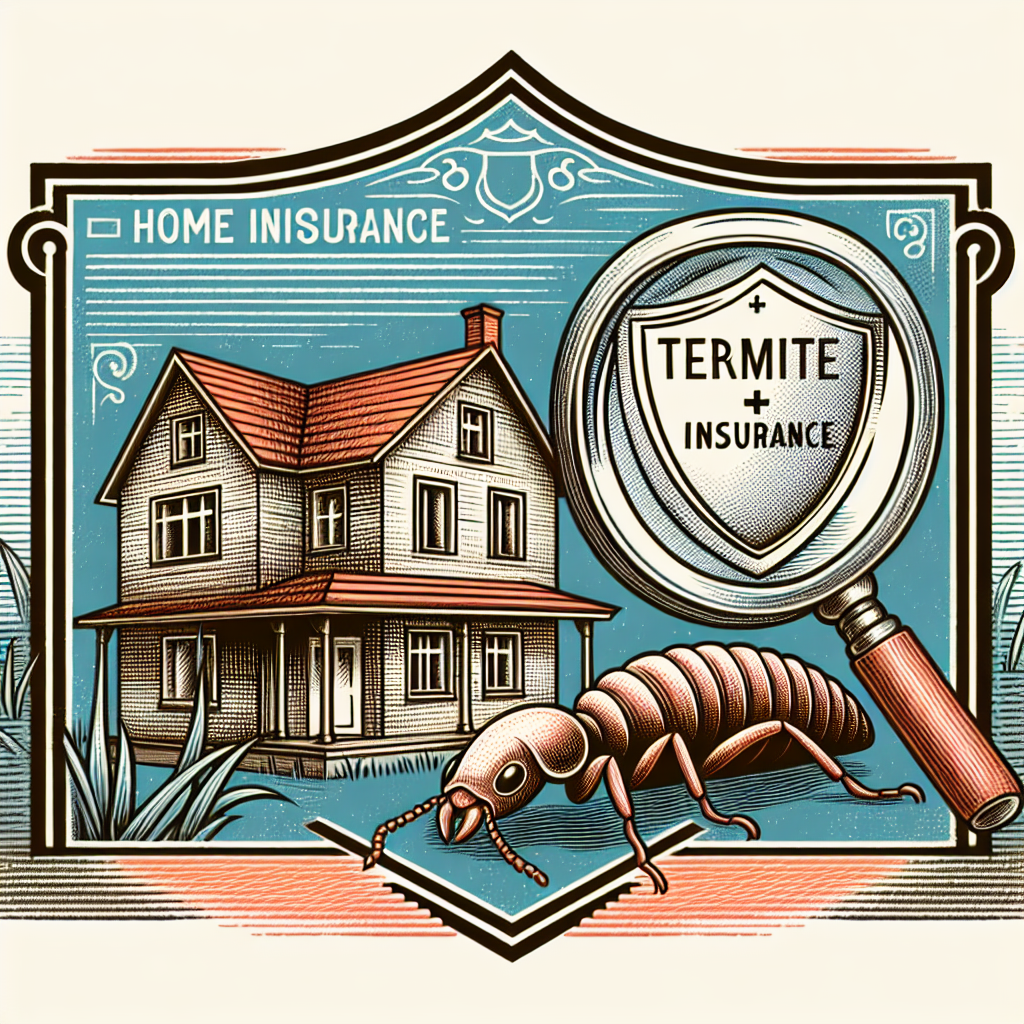Filed under Home Insurance on
Understanding Home Insurance and Termite Coverage Options

When it comes to safeguarding your home, understanding the intricacies of home insurance and termite coverage options can be crucial. Not only does your house represent a significant financial investment, but it is also the place where you and your family seek comfort, safety, and peace of mind. Preparing for unexpected events like emergencies or infestations forms an essential part of responsible home ownership. That’s where home insurance and termite coverage options come into play.
What is Home Insurance?
Home insurance, often referred to as homeowner's insurance, is a type of property insurance that covers private homes. It is a policy that combines various personal insurance protections, which can include losses occurring to one's home, its contents, loss of use (additional living expenses), or loss of other personal possessions. It can also provide liability insurance for accidents that may happen at the home or at the hands of the homeowner within the policy territory.
The scope of your home insurance policy can vary significantly depending on a number of factors including the value of your home, its location, and specific risks associated with it. This is why understanding home insurance is pivotal for tailoring it to meet your specific needs.
Basic Components of Home Insurance
Dwelling Protection
This covers the physical structure of your home, including the walls, roof, and any attached structures like a garage. If your home gets damaged due to a covered peril, such as fire or hail, the policy will assist in covering repair or rebuilding costs.
Personal Property Coverage
Personal property coverage comes into effect for anything within your home that you own. Electronics, furniture, clothing, and potentially other valuable items can be claimed if stolen or damaged under certain incidents.
Liability Protection
Liability protection covers you against lawsuits or claims for bodily injury or property damage that you or family members cause to other people.
Additional Living Expenses (ALE)
This includes any extra cost of living elsewhere if your home is not inhabitable due to damage from a covered disaster. It may cover hotel bills, restaurant meals, and other living expenses incurred while your home is being repaired.
An Overview of Termite Damage
Understanding termite damage is essential, as termites can quickly cause significant devastation to the structural integrity of your home. These wood-eating pests are often silent invaders, and by the time you notice visible damage, the infestation may have already spread extensively. The cost of termite damage is substantial, with repairs running into the thousands of dollars.
Since standard home insurance policies typically do not cover damage caused by termites, understanding termite coverage options becomes even more imperative to shield your investment from insidious harm.
Termite Coverage Options
Termite Bonds
A termite bond is a warranty between you and a pest control company. It generally includes regular termite inspections and treatment services to prevent infestations. If termites infest your home during the term of the bond, the company may cover the treatment costs and even reimburse for damage repairs.
Standalone Termite Insurance
Some companies offer standalone termite insurance policies or more comprehensive pest control plans that can include termite detection and prevention measures, as well as coverage for repairs due to termite damage. This type of insurance may not be widely available, so looking into local offerings is recommended.
Riders on Existing Policies
In certain cases, you can add termite coverage as a rider to your existing home insurance policy. These riders can vary in scope and cost, so it’s essential to understand what exactly is covered. Generally, these riders might only cover the treatment and not necessarily the resultant damage.
Why Do Standard Home Insurance Policies Exclude Termite Damage?
The core reason why standard home insurance excludes termite damage is that this kind of harm is considered preventable through regular maintenance and inspection. Insurance is designed to protect against unforeseen events, and unfortunately, termite damage usually doesn’t fall under this category since it can be mitigated through vigilant care and preventive action.
Industry Trends and Expert Opinions
As the understanding of home insurance and termite coverage options continues to evolve, recent trends have seen homeowners taking more proactive measures to protect their houses. According to John Simmons, a leading expert in pest management: "Incorporating regular pest control checks into your home maintenance routine can significantly reduce the risk of termite infestations, which in turn protects the home's value over time."
- Proactive Prevention: More homeowners are now investing in comprehensive pest control services as part of their annual home upkeep.
- Integration with Smart Home Tech: Some innovative pest control solutions are integrating with smart home technology to provide updates and alerts about potential pest activity.
- Custom Insurance Packages: Insurance companies are offering more customizable packages that include optional add-ons like termite coverage to meet specific homeowner needs.
Understanding Coverage Limitations
Once you have a grip on understanding home insurance and termite coverage options, it’s critical to comprehend the limitations and exclusions within your policy. Termites aside, home insurance policies can exclude various other risks such as floods, earthquakes, and intentional damage.
Assess your home’s location and features to determine what additional coverages you might need. For instance, if your location is prone to flooding, seeking additional flood insurance would be prudent.
Tips for Selecting Home Insurance and Termite Coverage
- Review Your Policy Annually: Ensure it aligns with any life changes or developments in your home.
- Shop Around: Explore various home insurance options and termite coverage to secure the best possible deal.
- Ask Questions: Don’t hesitate to inquire about the specifics of policies and what they cover.
- Seek Professional Advice: Consulting with insurance advisors or pest control professionals can provide valuable insights tailored to your needs.
- Understand Policy Terms: Always read the fine print and understand deductibles, exclusions, and processes for filing claims.
Final Thoughts
In essence, understanding home insurance and termite coverage options is an invaluable part of maintaining your abode's security. While termites are undeniably formidable foes, having the appropriate measures in place can ensure that they do not lead to undue stress or financial burdens. By learning about your coverage options, staying proactive with home maintenance, and seeking professional guidance when necessary, you can protect your beloved home against the perils of both nature and time.





